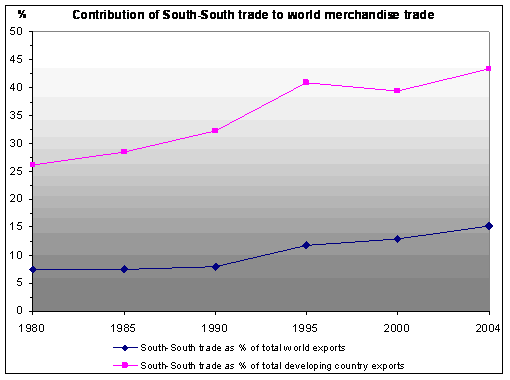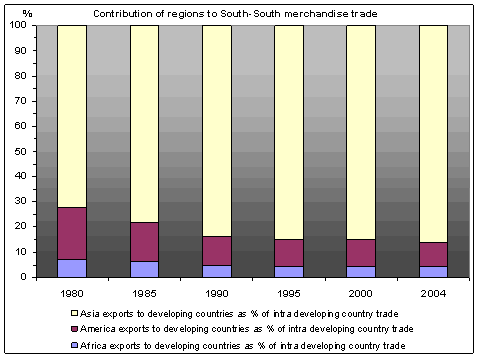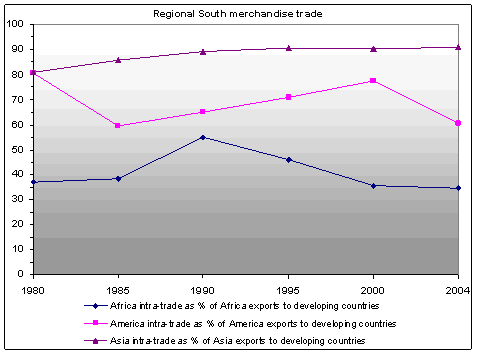Over the past 25 years, trade between developing countries has grown twice as fast as world trade. At present, 43% of these countries´ exports are to countries of the South, as compared with only 26% in 1980, according to the latest Handbook of Statistics (1), published today by UNCTAD.
This unique publication gives all users access to previously unpublished statistics that can be compared from one country to another over long periods of time. It gives insights into the trends in every area related to globalization: international trade in goods and services, commodity prices, foreign direct investment, financial flows and debt.
Comprehensive and easy-to-use, the UNCTAD Handbook on Statistics is available in both printed and electronic versions (on CD-ROM and the Internet). At a glance or with a click, anyone interested in South-South trade can find out that, for example:
- In 2004, developing countries recovered the share of world trade in goods they had in 1950 - that is, one third;
- Between those dates, their contribution to international trade went through a trough, dipping below 20 % in 1970;
- Customs duties applied by developing countries are still significantly higher - three times higher overall - than those applied by developed countries;
- However, in the past 15 years, customs duties in the countries of the South have been cut considerably, largely as a result of unilateral liberalization initiatives; the duties they apply today to most favoured nations for non-agricultural and non-oil products range up to 12%;
- Asian countries, especially those from South and East Asia, have made a major contribution to the expansion of South-South trade against a background of strong economic growth; their exports accounted for 86% of such trade in 2004, as against 72% a quarter of a century earlier;
- Conversely, the shares of African and, especially, Latin American countries have fallen significantly, to 4% and 10% respectively in 2004;
- Almost all Asian exports to developing countries go to Asian countries (91% in 2004), following a trend that had become more and more marked;
- At the same time, intraregional trade in Latin America and Africa accounts for a smaller proportion of their exports to developing countries (61% and 35% respectively in 2004).
ANNEX
Figures
Contribution of South-South trade to world merchandise trade
Contribution of regions to South-South merchandise trade
Regional South merchandise trade
Endnotes


